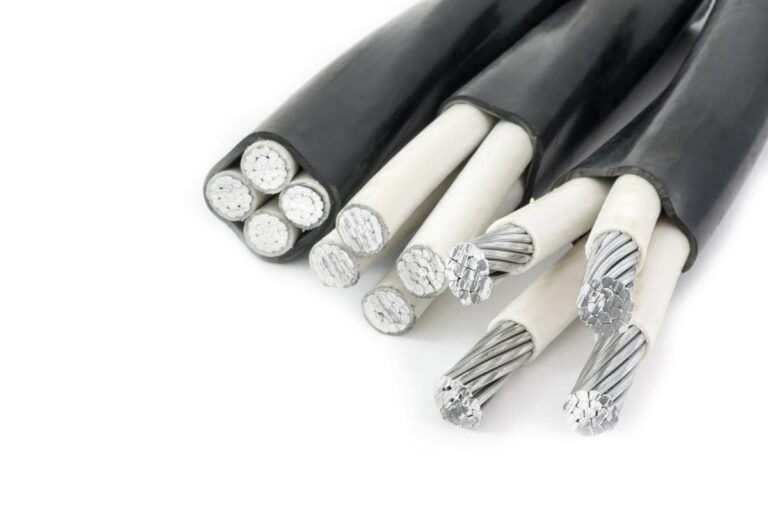
Legal Disclaimer – WARNING: Certain home improvement projects are inherently dangerous, and even the most benign tool can cause serious injury or death if not used properly. ALWAYS READ AND FOLLOW INSTRUCTION MANUALS AND SAFETY WARNINGS. You must be particularly careful when dealing with electricity – always use common sense. Any advice, guidance or other information provided on this website cannot completely anticipate your situation. If you are at all unsure about completing any aspect of this or other home wiring projects, immediately consult a qualified electrical contractor to perform the service(s) for you.
Ground Fault Circuit Interrupters (GFCI’s):
Ground Fault Interrupters are electrical outlets equipped with the ability to cut off the electrical current flowing through the wires. When an electrical power surge is detected, or if the GFI senses close dangerous moisture, the GFI outlet will interrupt the electrical current as a safety measure. Since several outlets are generally attached to a single GFI, a whole section of electrical outlets can appear to be out.
Located in your kitchen, bathrooms, laundry room, the exterior of home, lanai, and garage, these outlets look like ordinary outlets except for the two buttons centered in between the two plug sockets. To reset your GFI simply press the button labeled reset, using your finger or the end of a pencil (do not use metal), until it clicks. Check your outlets to see if they are working again.
Arc Fault Interrupters:
Your home is also equipped with Arc Fault Circuit Interrupters (AFCI) which is designed to prevent fires by detecting a non-working (i.e. non-intended/non-useful) electrical arc and disconnect the power before the arc starts a fire. Due to the sensitivity of the AFCI’s, a vacuum cleaner, the operation of a light switch, the insertion or removal of a plug into an electrical receptacle, or during the normal operation of other household devices an arc may occur causing the AFCI to trip at the breaker panel. If this should occur, turn the AFCI to the off position and then back to the on position.
Warning: GFI’s or Arc Faults do not protect your home or your electronic equipment from lightning strikes, and should not be expected to protect televisions, computers, or any electrical devices used in the home. Also, 80% of all surges are generated in the house by machines like AC units and your appliances.
An InPanel Surge Protector is one of the most cost-effective investments that can save your appliances, home theater system, personal computer and electronic equipment. CLICK HERE to have one of our service techs call you about this solution.
Compact Fluorescent Bulbs (CFLs):
With today’s increasing focus on energy efficiency, your home may come equipped with CFL light bulbs. Because of their make-up, it is normal for these bulbs to take a few minutes to reach their brightest level once turned on. This time lessens as the bulb gets “broken in”.
Feel free to ask us for a quote to change all your lamps and dimmers out to LED, which have ten plus year guarantee and saves you money monthly on your electric bill.
Tamper-Resistant Receptacles:
By code, your home requires the use of “Tamper-Resistant” receptacles. Tamper-resistant receptacles (also known as child-safety outlets) look like standard receptacles but they include automatic shutters, which admit plugs but block other objects. When plugging in a cord, make sure that both prongs push the internal shutters in at the same time. Some wiggling of the prongs, up/down and side to side, may be necessary to activate both shutters in unison. After a few uses these become easier to plug into, please try several plugs to break them in.
Shower Overhead Light:
Above your shower, you may have a “Vapor Proof” recessed can light. This light has a cover and is protected against steam from the shower. Because it is protected and covered, the light has a tendency to heat up. This light has a built-in temperature sensor that turns this light off automatically when it gets hot. If this light is not working, turn off the switch for about 20 minutes and try again. Then ensure the bulb is good before contacting the Warranty Department. Be sure if you change the bulb you use the correct wattage bulb as required. Typically we use a 14 watt CFL bulb.
Smoke and Carbon Monoxide Detectors:
These smoke detectors are wired into the electrical system of your home. In addition, there is a battery that provides back up if power is lost. The manufacturer recommends replacing your battery every six months. If the backup battery weakens in between replacement the smoke alarm will “chirp” about once a minute (the low battery warning).
Replace battery immediately for your protection. Please see Firex instructions for use of alkaline batteries.
Your smoke alarms are interconnected, meaning they communicate with each other, forming an integrated system of protection for your home. If one smoke alarm detects smoke, all interconnected alarms will sound. For example, if the smoke alarm in the master bedroom triggers an alarm, the smoke alarm in your living room will also sound.
How to Reset Your Breakers:
Resetting your breakers can sometimes restore power to parts your home. If your power goes out, check to see if your neighbors’ lights are still on. If they are, you can try to resolve your issue by resetting your breakers. This may get your power back on right away
Here’s an easy, three-step guide to resetting your breakers:
- Find the breaker panel in your home – it may be in your garage
- Next, look for a tripped breaker it should be in the half position or feel spongy as you push towards the on position. Be sure you turn the breakers that are tripped into the off position then to the on position.
- You should hear them snap into position each way.
Keep these safety tips in mind when resetting your breakers:
- Don’t use any tools. Your breakers are easily accessible by hand.
- Don’t touch the electric meter.
- Don’t stand in water when turning breakers on or off.
My AFCI trips off when I run my vacuum sweeper, paper shredder, treadmill, etc:
AFCI has been designed to work with devices with motors that are within the FCC standard for noise. Even though these devices have been manufactured to the FCC’s standards, after frequent use wear within the motor can create noise which trips the AFCI. To mitigate the noise generated by these devices, you may use a surge plug or surge strip.
Your house is equipped with 15 and 20 amp breakers threw out your home. Some vacuums draw more amps them others. If you are having issues with your vacuum tripping breakers. Try to plug it into the 20 amp circuits in your home, all GFCi’s and there is also one in your dining room.
80% of all surges are generated in the house by machines like AC units and appliances. An InPanel Surge Protector is one of the most cost-effective investments that can save your appliances, home theater system, personal computer and electronic equipment from power surges. CLICK HERE to have one of our service techs call you about this solution.



